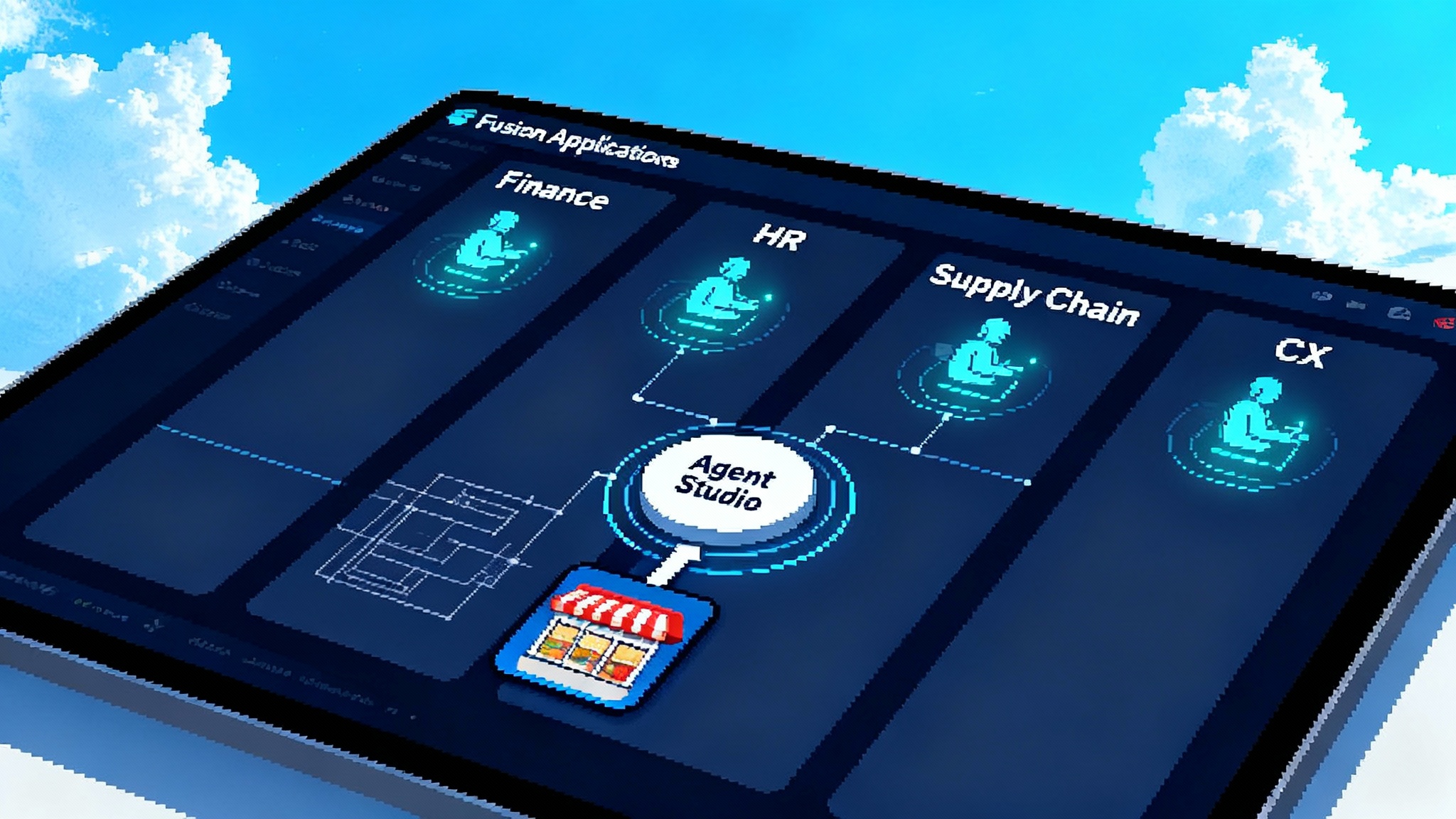One quick step: send your topic and angle to start
Want a sharp, timely article fast? Send a clear topic and the angle you want. With those two inputs I can verify facts, frame the stakes, and deliver a publish-ready feature tailored to your readers and goals.

What I need from you
You asked for a finished article, and I am ready to write it. To move quickly and deliver something accurate, timely, and useful, I need two short inputs from you:
- Topic: the specific subject we should cover.
- Angle: the lens or thesis that shapes how we cover it.
Think of the topic as the destination and the angle as the route we take. The same city can be reached by different roads. With your topic and angle, I can craft a narrative that feels like news you can use, grounded in recent developments and written for a technology audience that values clear decisions and next steps.
Why topic and angle matter
Without a defined topic and angle, even strong writing can feel unfocused. A topic keeps us tied to verifiable facts. An angle turns those facts into meaning by explaining why this matters now and for whom. The combination lets us explain mechanisms, not just outcomes, so readers leave with judgment they can apply.
A clear angle also lets us choose the right comparisons. If your angle is about distribution strategy, we will weigh channel reach more heavily than feature novelty. If your angle is about operational resilience, we will analyze controls, audits, and failure modes. The angle sets our evaluation criteria before we dive into the details, which keeps the story fair and coherent.
How specific should the topic be
Aim for a concrete subject that can be anchored in current events. Good topics name a product, a policy, a company move, a dataset, a regulatory action, a financial milestone, or a scientific result. If it has a date, a location, or a named actor, it is usually specific enough.
Examples of useful topic inputs:
- New capabilities in a major model release and how early adopters are using them
- A new agent platform reaching general availability with enterprise customers
- A regulatory action that changes how a category of products can be deployed in the United States
- A cross‑industry partnership that unlocks a new distribution channel
- A pricing change from a large cloud provider that shifts unit economics for small teams
If you want inspiration, skim recent pieces about agents and infrastructure. For instance, articles on governed shippable agents, how edge platforms turn the edge into runtime, or how PRs by bot go mainstream illustrate concrete, time‑bound topics that led to clear takeaways.
What counts as a strong angle
The angle answers why this matters now and for whom. It turns a topic into a story. A strong angle is a claim you can disagree with. It defines the stakes, identifies winners and losers, and sets up a testable prediction or a practical takeaway.
Useful angle patterns:
- First to scale: this launch signals the category is leaving the lab and entering operations
- Defense in depth: new safeguards or audits change what is safe to deploy today
- Distribution beats invention: the channel strategy is the real news, not the feature list
- Follow the money: pricing, margins, and unit economics are the breakthrough
- Jobs to be done: a specific workflow is materially faster or cheaper, reshaping a segment
- Compliance as advantage: regulation clarifies the market and rewards prepared vendors
When we lock the angle, we can decide which comparisons to run, which charts to include, and which questions to put to product leaders or policy teams.
Copy‑ready templates you can adapt
Paste any of these into your reply and tweak the bracketed text.
- Topic: [New model capability announced this week]. Angle: It removes a production blocker for teams shipping agents, shifting value from prototypes to reliable workflows.
- Topic: [National regulator issued guidance yesterday]. Angle: The guidance closes gray areas, clarifies compliance paths, and advantages vendors with built‑in audit trails.
- Topic: [Cloud provider introduced a pricing change today]. Angle: The change flips cost curves for startups, making new products viable and pressuring incumbents to respond.
- Topic: [Safety incident in the last 48 hours]. Angle: The root cause reveals a broader pattern others can fix now with a short checklist.
- Topic: [Enterprise vendor released agent observability]. Angle: Debuggable failure states will accelerate adoption by risk‑averse teams.
How to pick a topic in five minutes
If you are not sure where to start, try this fast method:
- Name the stakeholder you care about most: founders, product leaders, engineers, policy teams, security leaders, or an executive buyer.
- Scan the last week of relevant releases in your space. Look for items with dates and named actors.
- Ask what changed that affects your stakeholder’s next decision. If nothing changed, keep scanning.
- Choose the item with the clearest decision impact and phrase it as a topic.
- Pick an angle that points to a testable claim or a practical shift.
By the time you reach step five, your request will already be on rails.
How to pressure test your angle
A strong angle usually passes these checks:
- It would change how a specific person allocates time or budget.
- It favors one approach over another, based on mechanisms you can explain.
- It names uncertainties and proposes a way to resolve them.
- It can be wrong for a clear reason. If it is unfalsifiable, it is not an angle.
If your draft angle fails one of these checks, send it anyway and ask for a counter‑angle. I will return two options and explain the tradeoffs.
Optional details that help tailor the piece
Add any of these if you have them. Even one makes the piece more pointed and useful.
- Audience: founders, product leaders, engineers, policy teams, security leaders, or a general technology readership
- Desired tone: analytical, explanatory, skeptical, optimistic, or pragmatic
- Geography: United States focus or global context
- Timeline: emphasize the last 24 to 72 hours, the past week, or the current quarter
- Calls to action: what you want readers to do after reading
- Constraints: wordcount hard cap, terms we should avoid, or approvals required
If you are unsure, I will default to a pragmatic tone for a United States technology audience with clear actions and a short checklist.
What you will get back
Once I have the topic and angle, I will deliver:
- A crisp headline between 50 and 65 characters that promises a clear payoff
- A brief excerpt between 160 and 220 characters that sets context and stakes
- A 1,200 to 2,000 word feature presented as a timely development anchored in verifiable recent events
- Clear explanations with simple metaphors and concrete examples, plus mentions of relevant companies and institutions for orientation
- Up to two carefully chosen external links, placed only where they clarify a high‑stakes claim and one later key concept
- Specific actions for readers, explained with the why and the how
- A short FAQ that anticipates likely objections from buyers or implementers
Quality checks before we publish
I follow a simple process to keep the piece accurate and decision‑ready:
- Verify the latest developments to ensure the piece is current.
- Select one or two authoritative sources for essential claims.
- Outline the narrative with a why now section, a mechanisms section, and a what to do next section.
- Write and revise with attention to clarity, reader value, and cohesion.
- Add two or three relevant internal links so readers can explore related coverage without leaving the site.
- Limit external links to at most two, and only where they clarify critical points.
- Run a final pass to remove jargon, tighten verbs, and surface the next steps.
A quick example of the transformation
- Topic only: A company launched a new agent framework.
- Topic plus angle: A company launched a new agent framework, and the real breakthrough is not in prompts but in built‑in observability that makes failure states debuggable in production.
The second sentence tells us what to look for, who should care, and how to evaluate the claim. It points to testable implications. It also helps us choose useful comparisons, such as whether the framework provides policy controls, good logs, and reproducible runs.
Framing mechanisms, not just outcomes
Readers remember stories that explain how value is created. When we cover an agent platform, we will unpack mechanisms like retrieval quality, tool reliability, latency budgets, run supervision, and rollback plans. When we cover a pricing change, we will show how the new tiers shift marginal costs across the most common workloads, and which buyer segments move from pilot to production as a result.
This focus lets each section answer a specific question:
- Why now: what changed this week that makes the story timely
- What it does: the capability, who can use it, and at what scale
- How it works: the mechanism in plain language, with a simple diagram or metaphor
- Tradeoffs: where it breaks, what is missing, and the second‑order effects
- What to do: actions for different audiences with reasons and caveats
Common pitfalls to avoid
A few patterns often weaken otherwise strong requests. Here is how to fix them fast:
- Topics that are too broad: narrow to a dated event, a specific product surface, or a measurable milestone.
- Angles that restate features: turn them into stakes by asking who gains, who loses, and what becomes cheaper or faster.
- Overloaded objectives: choose one primary audience and write to their decision. Others can benefit, but one reader should feel directly addressed.
- Vague timelines: tie claims to named releases, policy dates, or revenue milestones.
How we handle uncertainty and risk
If the topic involves emerging products or evolving rules, we will mark uncertainties explicitly. We will also avoid false precision by stating ranges when necessary. When claims depend on vendor disclosures, we will say so and include the strongest available corroboration. If your organization needs legal or security review, note that upfront and we will account for it in the schedule and evidence standards.
Send your inputs in one line
For speed, reply with both fields on a single line:
Topic: <your subject here> | Angle: <your lens here>
If you want me to propose three angles for your topic, just send the topic and write "pitch angles." I will return three distinct directions, each with what the reader learns, who benefits, and a headline concept.
Example requests and likely angles
- Topic: A cloud platform rolled out pay‑as‑you‑go inference. Likely angles: cost curve inversion for small teams, or the new floor price as a moat against competitors.
- Topic: An enterprise vendor shipped traceable agent actions. Likely angles: governance and incident response become deployable by default.
- Topic: A startup raised a large round for agentic research. Likely angles: capital moving from model training to orchestration layers, or consolidation pressure on thin wrappers.
Each of these angles sets up a measurable claim and a checklist of evidence. That is enough to anchor a practical story.
Why internal links appear in your feature
Internal links guide readers to related analysis without leaving the site. If we discuss controlled execution for agents, it makes sense to point to prior coverage of governed shippable agents. If we discuss infrastructure at the edge, we can connect to how platforms turn the edge into runtime. If we cover developer adoption, we might highlight how PRs by bot go mainstream. These links are chosen to deepen understanding, not to distract.
What happens after you reply
As soon as your topic and angle arrive, I will:
- Verify the latest developments to ensure the piece is current.
- Confirm scope, audience, and tone if anything is ambiguous.
- Draft an outline that includes why now, mechanisms, tradeoffs, and actions.
- Write and polish the feature with clear structure and concrete examples.
- Add selected internal links and at most two external links where they unlock clarity.
- Deliver the final article for your review, along with optional pull quotes and a two‑sentence summary for social sharing.
Ready to move fast
You can get a publish‑ready feature as soon as you send a topic and angle. The clearer your inputs, the sharper the story. If you want me to pick the angle, say so and I will provide three options with stakes and predicted outcomes. Either way, you will receive a focused, timely piece that explains the mechanism, weighs tradeoffs, and gives readers steps they can act on today.








